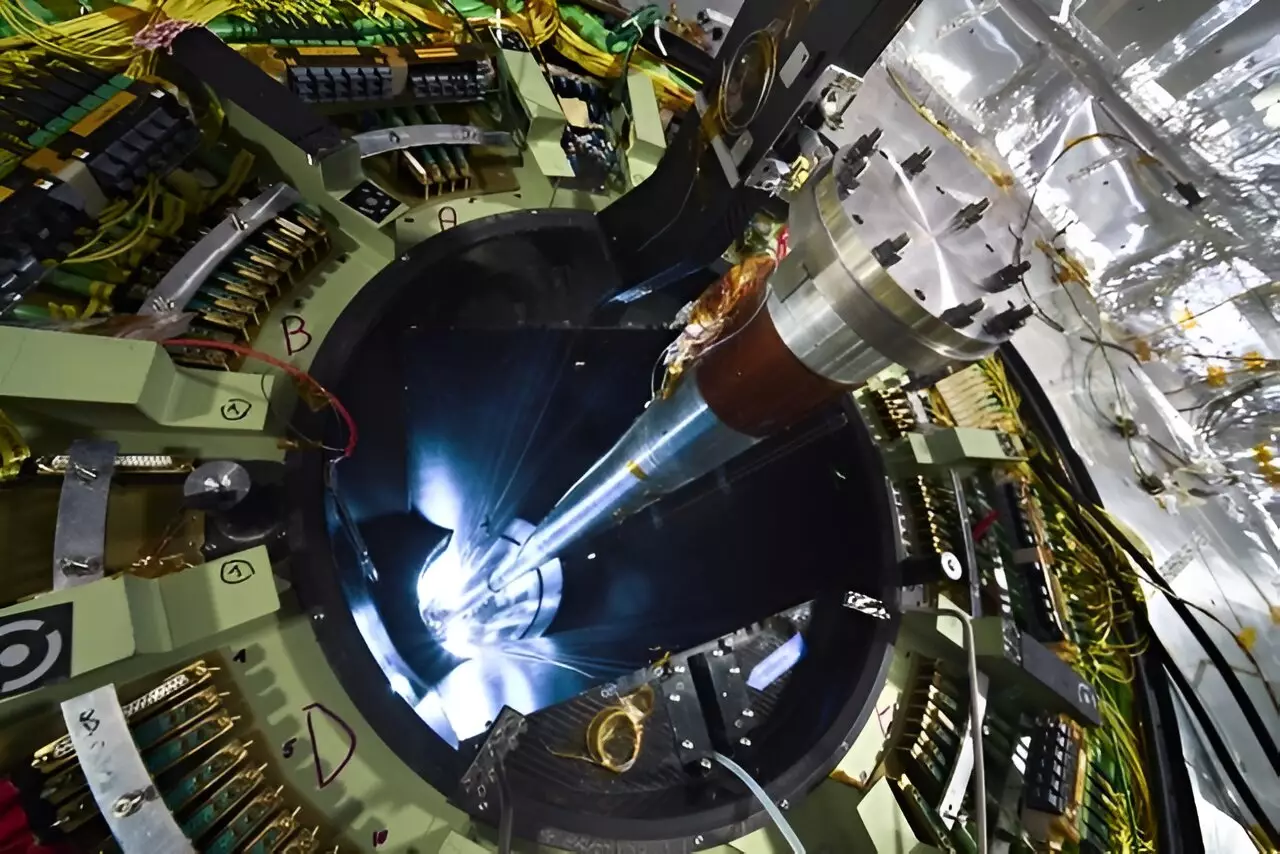The concept of magnetic monopoles has long fascinated physicists, representing a profound enigma in the realm of particle physics. Unlike conventional magnets, which possess both a north and a south pole, magnetic monopoles are theorized to exist as isolated magnets with a single pole. This idea has intrigued scientists for decades, especially with the predictions made by eminent figures such as Pierre Curie and Paul Dirac. The possibility that such entities could exist changes our comprehension of magnetic phenomena and could potentially unravel new aspects of theoretical physics. Recent advancements at the Large Hadron Collider (LHC) at CERN have provided fresh insights into this elusive inquiry, as researchers strive to validate or refute the existence of these unique particles.
In a noteworthy collaborative effort led by scientists from the University of Nottingham, an international team has embarked on a meticulous investigation into the existence of magnetic monopoles. This research utilized a retired segment of the LHC’s beam pipe, expanding the boundaries of previous experimental searches. Published in *Physical Review Letters*, their findings present the most stringent limits yet on the existence of these potential magnetic monopoles. The exploration was not only ambitious but methodologically distinct, aiming to delve deeper into a mystery that has yet to be resolved within the scientific community.
The beam pipe utilized in this study had previously played a crucial role in previous particle collisions at the LHC, providing a unique context for examining potential monopoles. The LHC is renowned for its ability to collide particles at unprecedented energy levels, creating conditions that may allow for the spontaneous generation of monopoles under immense magnetic fields, surpassing even those found in pulsars or neutron stars—one of the essential hypotheses guiding this research.
The research team, primarily led by Oliver Gould, a respected theorist affiliated with the School of Physics and Astronomy at the University of Nottingham, meticulously examined heavy ion collisions at the LHC. These collisions produce extraordinarily high-energy conditions, positing a fertile ground for the emergence of magnetic monopoles via the Schwinger mechanism—theoretical grounds suggesting that strong fields could produce new particles. This insight paved the way for a bold experimental approach: searching for magnetic charges that could be trapped within the material of the beam pipe.
Aditya Upreti, a Ph.D. candidate involved in the project, articulated the unique advantages of their chosen methodology. He explained that the very design of the beam pipe, having been subjected to immense radiation from previous collisions, created an excellent opportunity for locating any existing monopoles. These hypothetical particles, if they exist, should remain immutable within the pipe’s structure due to the conservation of magnetic charge, which fueled their search initiatives.
Despite rigorous efforts and advanced equipment, including a superconductive magnetometer designed to detect subtle magnetic signals, the team did not observe evidence of magnetic monopoles within the section of the beam pipe analyzed. However, their findings were not without merit. The absence of detected monopoles places considerable constraints on their potential existence, ruling out monopoles with masses below a certain threshold (80 GeV/c²). This outcome solidifies the team’s position as pioneering researchers in setting experimental bounds on magnetic charges, enhancing the scholarly understanding of magnetic monopoles.
Furthermore, the outcome opens pathways for future research endeavors. The team plans to conduct further investigations in newer sections of the beam pipe, particularly those associated with higher-energy runs at the LHC. Such expansions in research could significantly broaden the exploration scope, effectively doubling their potential to discover any existing magnetic monopoles.
The investigation of magnetic monopoles remains one of the most tantalizing inquiries in modern physics. While the current efforts did not yield positive results regarding their existence, the rigorous methodology and comprehensive analysis set a foundation for future explorations. As researchers continuously expand the parameters of their studies, there remains hope that these elusive particles may one day be discovered, potentially changing the landscape of theoretical physics and our understanding of magnetism. In this vast and complex universe, the journey for answers is just as important as the destination itself.

